Sapa is one of Vietnam's premium attractions, enticing both foreigners and Vietnamese with its mix of stunning scenery and culture. The heart of the town, near the market square and church, is now almost entirely devoted to tourism services with hundreds of visitors arriving every morning, mostly off the overnight train from Hanoi.
Then there is Bac Ha, also in Lao Cai province, 110 kilometres away. Bac Ha district is Flower Hmong heartland and Bac Ha town is best known for its Sunday market, which attracts vendors and shoppers from far and wide. Although the market is a big tourist pull, and trekking opportunities just as appealing as those in Sapa, far fewer visitors choose Bac Ha as a base, and its development as a tourist destination is years behind that of Sapa.
The two towns are barely comparable. Sapa, with its multitude of hotels, restaurants and other tourist services and Bac Ha with, well, none of that. Which one's right for you?
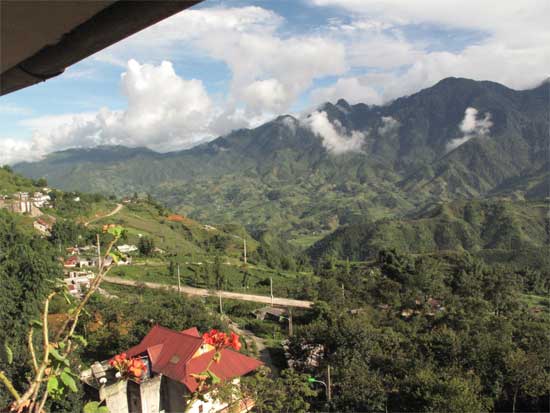
Now that's a balcony view.
Transport
Both are accessible from Lao Cai by bus but Sapa's easier to reach. Minibuses depart regularly direct from Lao Cai station or, for the return journey, from your hotel or the church, and the journey only takes around 45 minutes.
To get to Bac Ha you'll need to go to the bus station in Lao Cai and travel time is a couple of hours. You can pick a bus up however without having to wait too long from arrival by overnight train from Hanoi and the price is only slightly higher than the bus up to Sapa. Heading back into Lao Cai from Bac Ha you will end up with a spare few hours in Lao Cai, due to bus times.
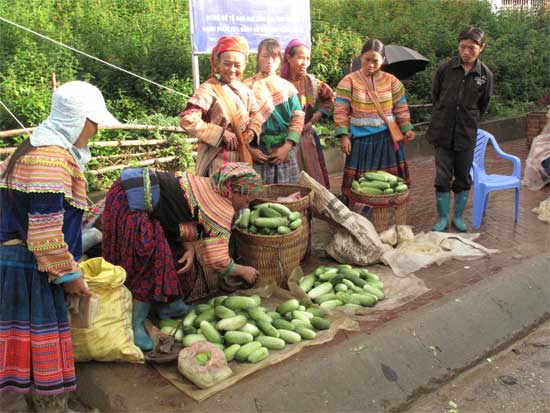
Flower H'mong want to sell you a cucumber.
If you're travelling onward, then starting in Sapa shaves a few hours off a journey up to Dien Bien Phu and the Laos border and Bac Ha is closer to Ha Giang.
Accommodation
If you're fussy about where you lay your head at night, and particularly if you want high-end or luxury accommodation, then Bac Ha will not suit your needs. But most will find something suitable, from budget US$10 a night places -- and no, they're not pretty but they're US$10 -- to the priciest place in town, the Sao Mai hotel, which still only comes in at around US$35 for the best room.
Sapa, on the other hand, lists 62 hotels on Agoda alone, from US$5 dorm beds through to the fancy Victoria Sapa Hotel.
Wining and dining
While Sapa is by no means the culinary capital of Vietnam, there's plenty of variety of food on offer, from local cuisine through to pizza, burgers, Indian, steak, tapas and pasta. Wine is also covered, and although Sapa's not a late night place a couple of places do stay open after midnight and can get lively if the right crowd is in.
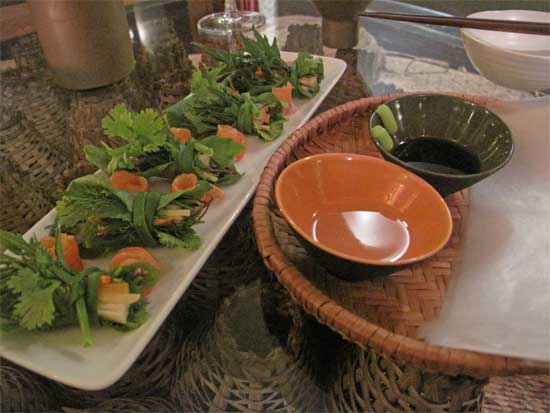
This meal does not exist in Bac Ha.
Bac Ha has a handful of tourist friendly restaurants -- in other words, places with English-language menus that throw a few Western dishes in with the Vietnamese -- as well as local restaurants. You'll find enough variety for a few nights but don't expect to come away culinarily enriched and the wine's more likely to be local rice or corn wine.
Views from the town
Sapa provides countless opportunities to wonder at the scenery. Depending on where you stay you might not even have to get out of bed to get a glimpse of the valley and Fansipan Mountain, and sitting with a drink, looking out over the valley is an agreeable way to pass a few hours or even a day.
Bac Ha town doesn't have mountain views although with no shortage of people watching opportunities -- especially on a Sunday -- you might be just as happy at street level.
Trekking
Organised treks of varying length are available from both locations, with or without homestays. With fewer tourists using Bac Ha as a base you are likely to end up in a smaller group -- probably a private tour -- and consequently cheap treks are not available.
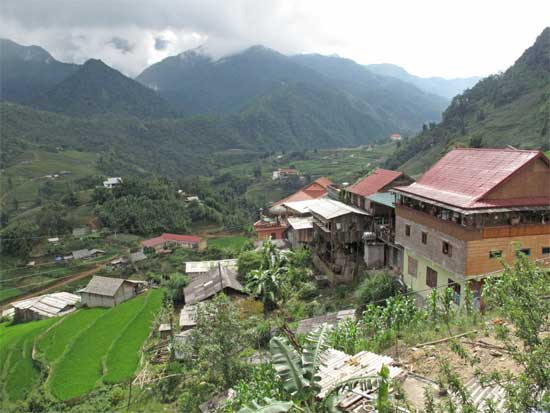
Fancy a wander?
Private treks are also available in Sapa but for those on a budget the group treks are much friendlier on the wallet.
If you want to go it alone, it's possible in both but easier from Sapa as village locations are clearly marked from the main roads and the short walk to Cat Cat village and waterfall is easily done. You can walk to Ban Pho village from Bac Ha, but once there you're on your own so don't get lost.
Market tours
If it's all about the markets for you -- and they are certainly worth a look -- then Bac Ha is the place to be. Visit Coc Ly on Tuesday, Cao Son on Wednesday, Can Cau on Saturday, Xim Man or Bac Ha on Sunday. You don't even have to travel for the last one.
The nearest ethnic minority market to Sapa is Muong Hom, but on our last visit at the end of 2012 the road was treacherous due to construction and not recommended -- hopefully it's now been improved. Bac Ha market is also a popular organised day trip from Sapa. It takes about three hours to get there so make sure you get on a tour that's leaving early, or you'll miss the best bits. The other markets can be visited from Sapa on a private tour but that's going to cost you, and it's a lot of time in a car.
Tourist services
As well as having numerous hotels and restaurants, Sapa is also better set up altogether for tourists with a wider range of tour operators to choose from, a few ATMs and shopping galore. Bac Ha has one main tour operator, no ATMs and the only decent souvenir shopping is at one of the markets. Motorbike hire and postal services are available at both.
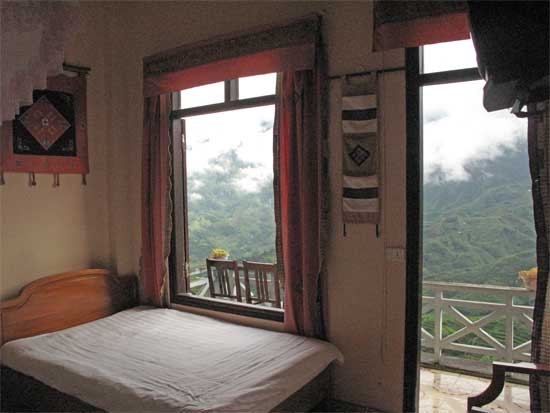
Average room with a not-average view.
Hassle
A lot of people find the hassle from the Hmong women on the streets of Sapa, as well as the hordes of women that tag along on treks with the ultimate aim of selling you a bag, to be irritating. This is mercifully absent in Bac Ha, except for on market day, but even then it's not too much of an intrusion.
In conclusion
Of course, which spot you choose comes down to personal preference. You could always split your time between the two: a few nights in Sapa for a trek and to take in the scenery over a cafe latte, followed by a night or two in Bac Ha for the market.
But in summary, the main difference is that Bac Ha is less touched by crowds and is a better base for visiting the markets, whereas Sapa might be more up your street -- or mountain -- if you want ease, more culinary variety and a ready view on your doorstep. Whichever you choose, the north of Vietnam is a worthy tourist destination and unlikely to leave you disappointed.